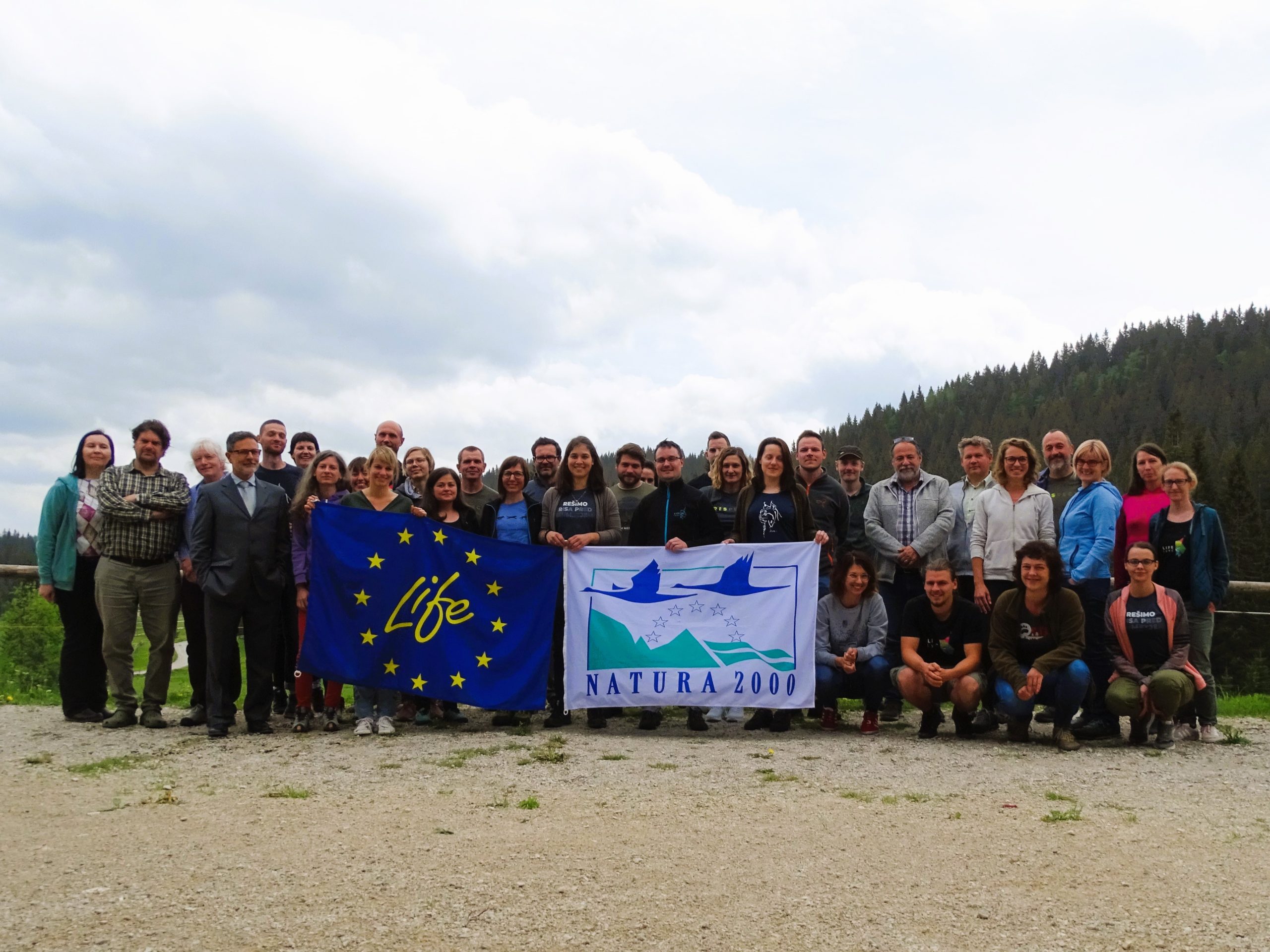Today, we are celebrating World Rewilding Day, with a slogan “Hope into Action” to raise awareness about the benefits of nature conservation for wildlife, people, and the planet. The LIFE Lynx project has brought together experts, scientists, conservationists, hunters, and other local people from five European countries with a common goal – to save the Lynx from extinction. Their efforts are featured in the documentary film Together for Lynx
Together we will save the Eurasian lynx, the largest cat living in Europe’s forests. #HopeIntoAction
At the end of March, the international project to save lynx from extinction, LIFE Lynx, will come to an end. In over the six years of the project, we have brought 18 Carpathian lynxes to Slovenia and Croatia and recorded more than 30 of their offspring. Today, there have about 50 adult lynxes in Slovenia, about 40 in the southern part of the population and about 10 in the Slovenian Alps. In the future, the aim is to link the two parts of the population, which is essential for the long-term conservation of the lynx in Slovenia.
We have already recorded more than 30 offspring of introduced lynx, which is an optimistic message for the future. It is important that a so-called “stepping-stone population” has been established in the Slovenian Alps, which will allow a connection with lynx in Austria and, in the long term via Italy, with Switzerland. Only larger connected populations ensure the long-term survival of the lynx. The five lynxes translocated to the Slovenian Alps have established territories in the wider release area and have offspring, who is already establishing territories, which gives very good prospects for the future. In addition, releases of lynx in the Slovenian Alps have been reinforced by releases in Italy under the ULyCa2 project.
Miha Krofel, Biotechnical Faculty, University of Ljubljana: “The success of the project can also be measured by how many lynxes we have in our country. Since the beginning of the project, we have raised the number of adult lynxes in Slovenia from the brink of extinction, when there were only 20 adult animals, to around 50. The population is also expanding spatially, which gives hope that in the future it will connect with one of the neighboring lynx populations and allow for a natural gene flow.” Connecting the Dinaric part of the population with the Alpine part is important for the long-term conservation of the lynx, however the Ljubljana-Koper highway is a major obstacle, as there is (for now) no green bridge to allow the animals to cross.
Regular monitoring of lynx, both in terms of abundance and genetic status, will be necessary to ensure the favorable status of the population. Tomaž Skrbinšek from the Biotechnical Faculty, University of Ljubljana explains that “the genetic effects of introductions are already being seen and the average inbreeding rate is already approaching that of the population in the 1980s, when our lynxes were thriving and expanding. The actual conservation impact will continue to grow over the next decade as the proportion translocated lynxes’ offspring will increase.”
We will continue to monitor the inbreeding as the biggest threat to our lynx. The long-term goal is to link the population with neighboring populations and establish a natural gene flow. If this does not happen, our isolated population will need occasional translocations until connectivity with other larger lynx populations is assured.
Rok Černe, LIFE Lynx Project Coordinator, Slovenia Forest Service: ” A lot of effort was put in the LIFE Lynx project to prevent another lynx extinction in this part of Europe. Let us not exterminate species so that projects like LIFE Lynx will no longer be needed in the future.”

LIFE Lynx project team members. Photo LIFE Lynx
